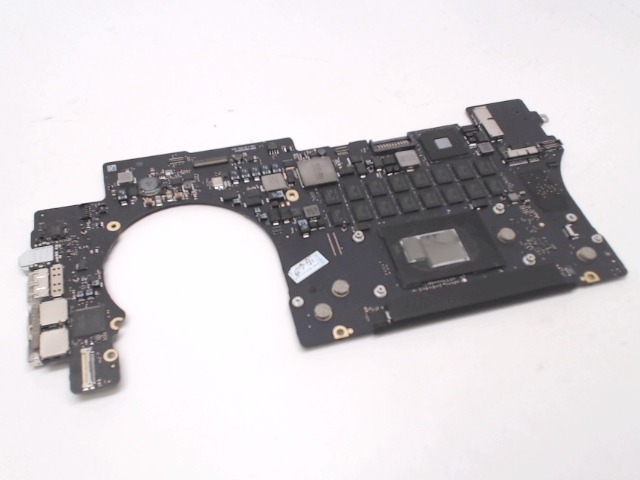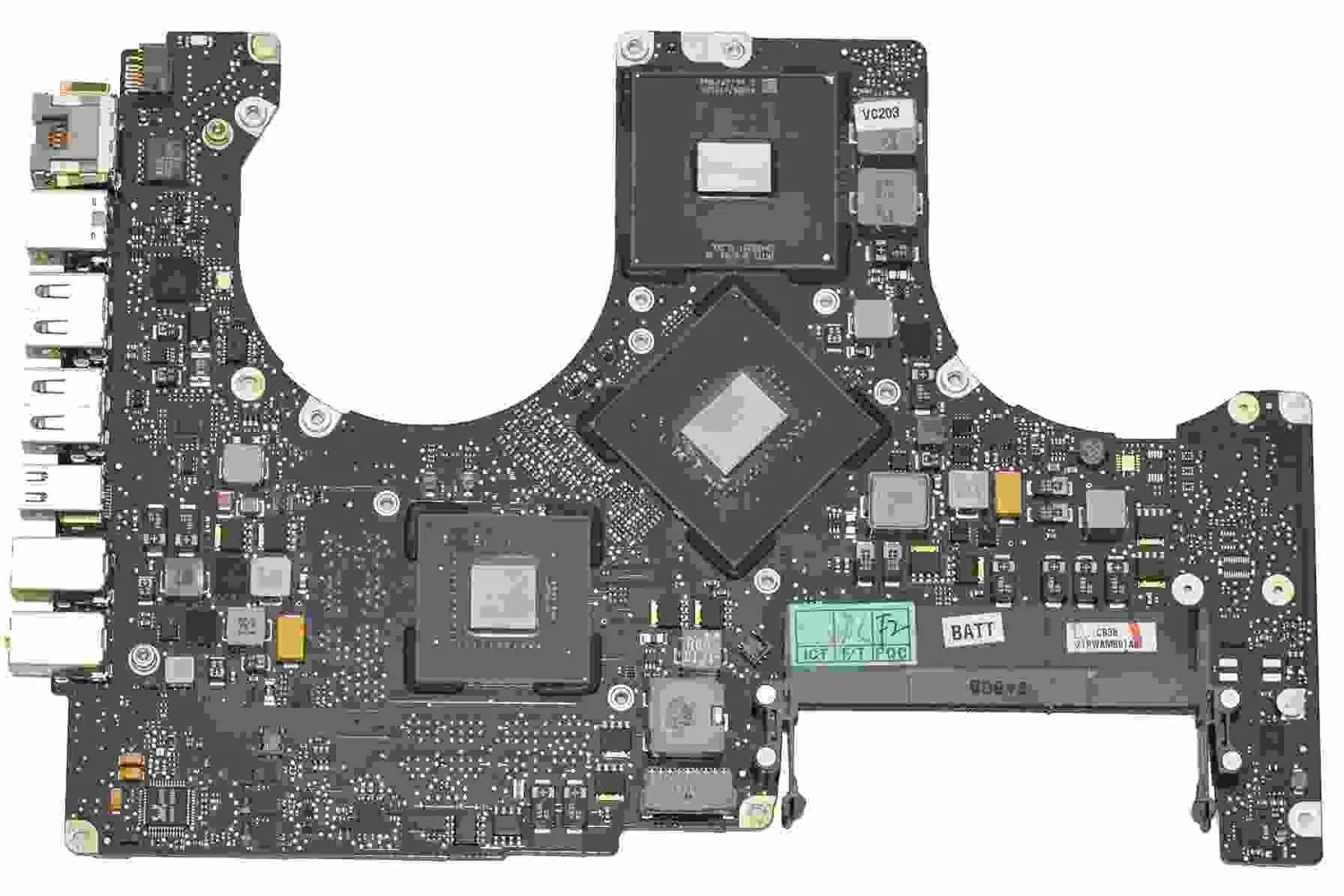
- #2.66ghz i7 macbook pro 13 logic board mac os x
- #2.66ghz i7 macbook pro 13 logic board drivers
- #2.66ghz i7 macbook pro 13 logic board full
- #2.66ghz i7 macbook pro 13 logic board windows 7
The all-important palm rests remain warm to the touch and still comfortable.


Under long periods of high CPU and GPU load the surfaces warm up to 42☌. The palm rest remained cool the entire time. In our test after many hours of normal, stress-free operation, we were able to get a maximum reading of 35☌. The surface temperatures of the aluminum chassis always remain at acceptable levels when not under stress. The white MacBook with 2.4 GHz Core 2 Duo was somewhat quieter under stress. In comparison to its MacBook colleagues the 13" MacBook Pro is right in line with its 15" and 17" brethren.
#2.66ghz i7 macbook pro 13 logic board full
When stressing the system with Furmark and Prime 95 the full 6000 rpm of the cooling system are unlocked and the noise increases to 45.8 dB(A).
#2.66ghz i7 macbook pro 13 logic board windows 7
When using Windows 7 the cooling fan turns things up a notch when under stress to the tune of 43 dB(A) during a 3DMark 05 test. Things look a bit different under Windows. When playing Half-Life 2 Episode 2 the fan was turning away at 3000-4000 rpm, which was enough to generate the 32-34.5 dB(A) that we measured.
#2.66ghz i7 macbook pro 13 logic board mac os x
When operating Mac OS X the MacBook stays very quiet under stress. Only when one puts an ear to the vent can one hear the cooling fan spinning away at 2000 rpm. With an SSD installed (Runcore IV) the MacBook remains practically silent. When not under stress the gentle sound of the HDD dominates the picture with around 30-31 dB(A) of noise from a 15cm distance. The noise profile of our MacBook Pro 13 test model is without peer. In comparison to the top MBP13 model from 2009, the higher clock frequency of the P8800 CPU allows about 5% more performance than previously available. In conclusion, processor performance of the new Core i5 and i7 CPUs in the 15" and 17" MBP notebooks are clearly faster. When comparing these results to other Core 2 Duo P8800 Windows notebooks, the MBP13 remains around 2-4% behind the competition, as most are outfitted with dedicated graphics and Intel chipsets. Here the P8800 requires, respectfully, between 74% and 92% longer for the same calculations. The wPrime CPU benchmark test makes the advancements of the Core-i CPUs even more apparent. The CPU test in 3DMark06 shows a gap of -5% to the P8700, +26% to the Core i5-540M and +36% to the i7-620M. The Core i5 and i7 CPUs in the 15" and 17" models, are clearly ahead of the Core 2 Duo with gains of 34% and 49% (respectively) in the Cinebench R10 Rendering Test. The processor performance aligns itself, thanks to its higher frequency, around 5% above the Core 2 Duo P8700 in the 2009 MBP 13.
#2.66ghz i7 macbook pro 13 logic board drivers
Windows support of the touch pad is unfortunately still not on the same level as the drivers available to Mac OS X users. Furthermore, one can execute various functional gestures with up to four fingers. The excellent tracking of the pad remains the same as does the omission of dedicated mouse buttons. The newest revision updates the pad with "Inertial Scrolling", which as the name implies allows scrolling with momentum-especially useful when reading long web pages.

Still, for Windows-users the keyboard layout will necessitate a longer time to get used to.Įven the glass touch pad is identical to those in the larger MacBook Pro versions. Thanks to the firm fit, comfortable size and the excellent feedback one can add the keyboard, naturally independent of subjective individual taste, to the list of highest quality laptop keyboards. Also integrated into the design is the practical keyboard backlight (paired to the brightness sensor). In comparison to the white MacBook, the keystroke is a touch softer and the haptics of the keyboard are a bit higher grade. It is identical to the other MacBook Pro keyboards and offers the same layout that Apple is well-known for. With respect to the chiclet keyboard, nothing has changed from the older models. However, due to the small height of the chassis, this is not a big problem. Also noteworthy is that the battery cannot be changed by the user.Ī further point of criticism levied on the previous unibody-models remains the same: the sharp front angle is uncomfortable to the underarm after periods of long use at a desk. If one wants access in order to change the HDD or RAM, the entire bottom shell must be unscrewed and removed. Thanks to the fixed integration of the slightly more powerful yet equally-sized battery, Apple has eliminated the maintenance hatch on the underside of the notebook. The robustness of the aluminum casing is incredible compared to other notebooks: even the traditionally weak area on many notebooks above the DVD drive does not give at all under pressure. In comparison to the larger MacBook Pro models, the design of the 13" MacBook is tailored to be better proportioned. The unibody aluminum chassis of the MacBook continues to set the standard for design, haptics, stability and craftsmanship.


 0 kommentar(er)
0 kommentar(er)
